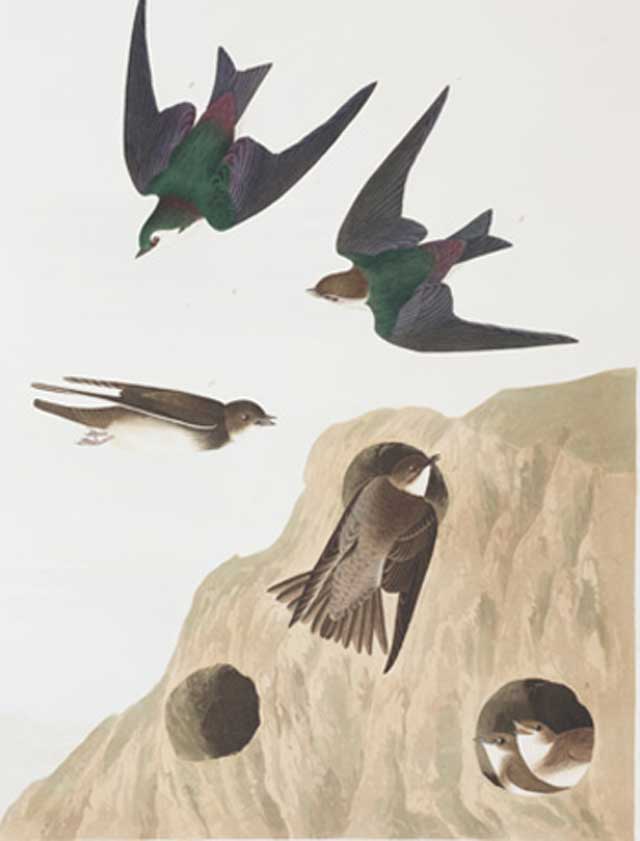Today marks the eve of the anniversary of the birth of John James Audubon (1785-1851), the most celebrated American ornithological artist. Since this is also the season when swallows make their annual migration from south to north, this week’s picture is an illustration of two species of swallow from Audubon’s monumental work, The Birds of America.
The birds at the top of the picture are Violet Green Swallows (tachycineta thalassina), which winter in Central America and migrate in the spring to the western United States. The other pair, browner in colour and shown with two chicks peeping from a hole in a sand bank, are known as Bank Swallows in America and as Sand Martins in this country (where they are also to be found in large numbers). Their scientific name is Riparia riparia. Those in America migrate from South America, while those in Britain winter in African countries such as Senegal. Among the earliest migrants to these shores, they are relatively inconspicuous in the British countryside because they nest in river banks and rarely stray from the waterside.
John James Audubon was an impulsive, larger-than-life character with a propensity for self-mythologisation. Born Jean-Jacques Audubon, the illegitimate son of a French merchant and slaver and a Creole chambermaid, he later spread the rumour that he was of royal descent, claiming to be “the Lost Dauphin”, no less. When he was eighteen years old, in 1803, he was sent to America, ostensibly to oversee Mill Grove, his father’s estate near Philadelphia, although the real reason was probably to avoid being drafted into Napoleon’s Grande Armee. Having little interest in estate management, he gradually squandered his father’s money while exploring the wilds of America and indulging his two principal passions, hunting and drawing birds. He also...


